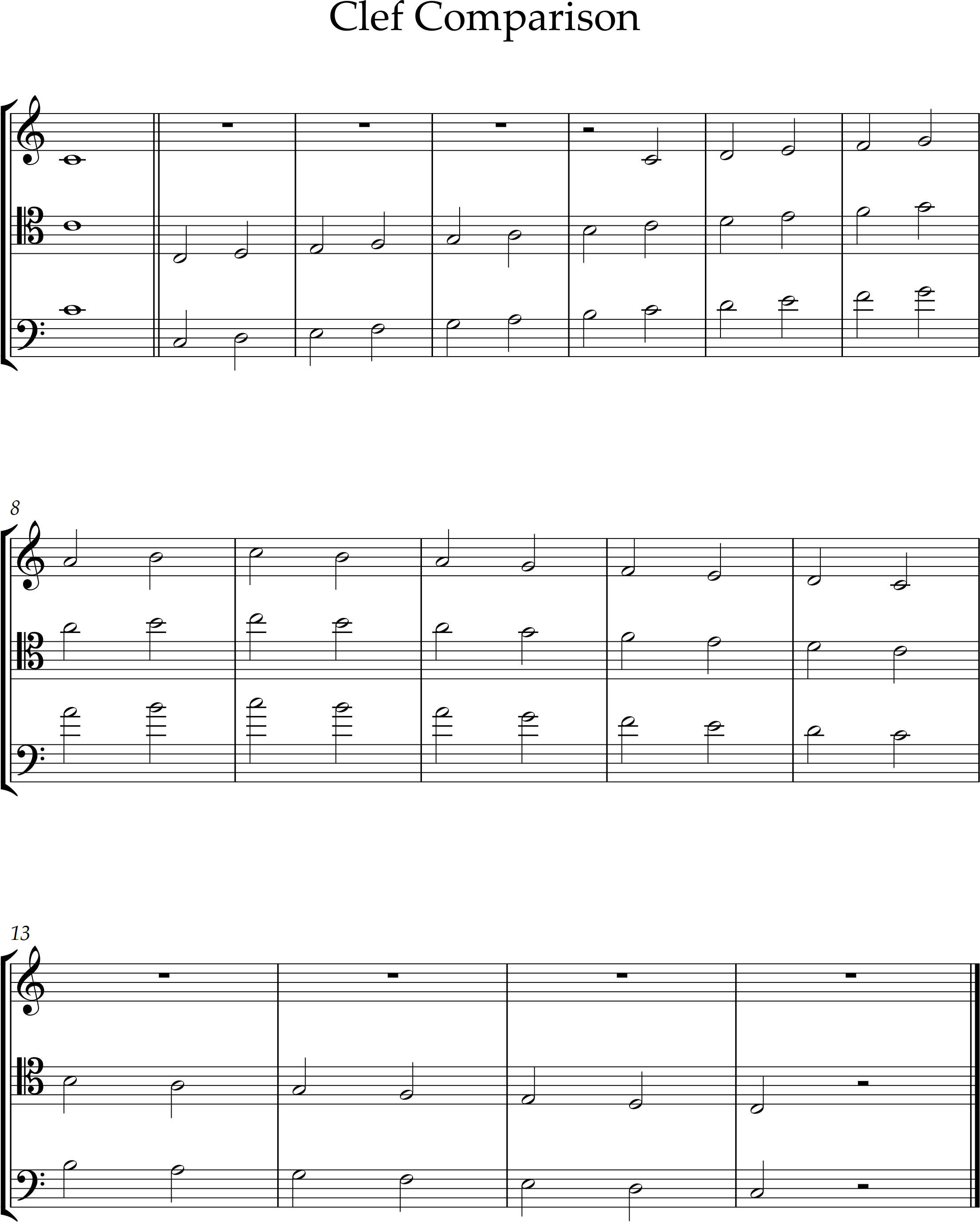Playing in the fourth octave requires much the same as the top of the third octave:
- Extremely fast, cold, steady air
- Accurate aural target
- Firm embouchure (lips)
- Open oral cavity
- Correct fingerings
The final high notes covered in this volume include high A, Bb, B, C. The practical range of the bassoon extends up to E (the top space of the treble staff), and a possible range of F (top line). Some bassoonists have extended their own range beyond high F through experimentation and perseverance.
Good control over a three-octave range (Bb1 to Bb3) is the generally accepted expectation for high school seniors applying to become music majors. Exceptional students will have a range up to C (third space treble staff) or D (fourth line treble staff).
Fingerings
Fingerings in the fourth octave bare little if any resemblance to notes in the lower octaves and must be memorized through practice of extended scales, intervals, and arpeggios. Individual fingers for the final notes are covered in the following chapters.
Response
Good response on these notes requires the following:
- Extremely fast, cold, steady airstream
- Firm embouchure (lips not jaws)
- More reed in the mouth (move lips close to first wire)
- Correct fingerings
Intonation
Good intonation on these notes requires the following:
- Accurate aural target
- Open oral cavity
- Space between the teeth
- Voicing
- Long tone practice with drones
Tone
A rich, resonant tone quality on these notes requires:
- Hear the sound you want in your head
- Open oral cavity
- Space between the teeth
- Voicing
- Use of the resonance key on all notes above F3 (E3 for some)
- Long tone practice
Tenor Clef
Tenor clef is one of the original C clefs. Middle C is the fourth line up.

This register needs a lot of leger lines when written in bass clef. Composers will frequently use tenor clef to avoid leger lines. Once a student learns high G, the study of tenor clef should begin. I recommend Introductory Studies in Tenor and Alto Clef for Trombone: Before Blazhevich by Brad Edwards. The book includes examples in alto clef because it is written for trombone students. However, the alto clef examples can either be transposed or skipped because alto clef is not traditionally used in bassoon music.
Composers will occasionally write for bassoon in treble clef. This is more common in music written after 1940.
Comparison of Clefs



Feedback/Errata